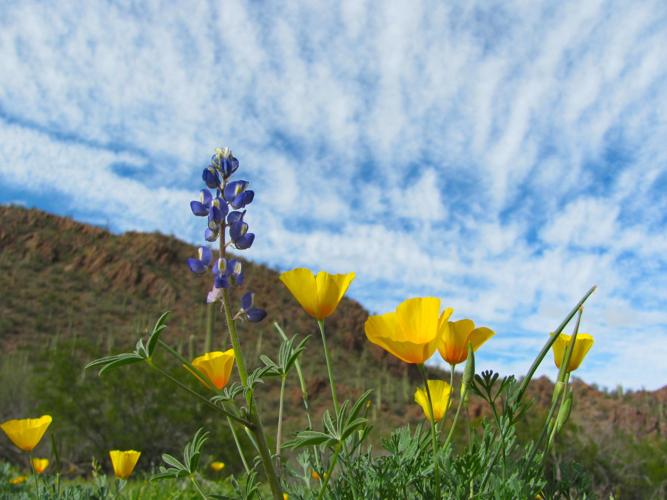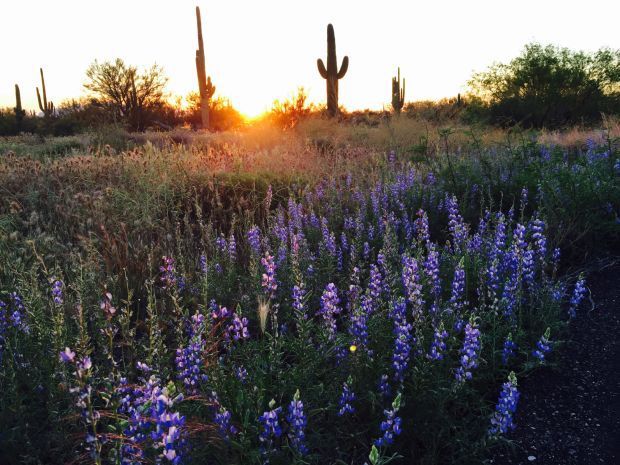Many of us in Southern Arizona look forward to spectacular wildflower displays in the desert as winter ends — but this spring’s bloom could be a bust.
The reason: An almost total lack of autumn rains needed for germination of colorful annual wildflowers such as showy gold poppies and blue desert lupines.
“The annual flowers will most likely be the poorest showing in several years,” said botanist and wildflower expert Mark Dimmitt.
That view is shared by other experts.
“If nothing happens with rainfall in the next few weeks, I’m thinking spring will be dismal for annual species,” said John Wiens, nursery horticulturist with the Arizona-Sonora Desert Museum west of Tucson. “We know that a good germinating-rain event is needed to get them started, followed by regular rains every couple weeks to sustain them. Temperatures must play a big part in it, also.
“I haven’t been able to analyze our weather data here at the Desert Museum, but I feel this fall ranks as one of the driest,” Wiens said. “Here at the museum, we have had only one measurable rainfall since late August.”
STILL SOME HOPE
“There have been occasional exceptions” to the disappointing bloom that usually follows extremely dry autumn weather, said Dimmitt. “Unusually warm and heavy rains that fall in January or even February, followed by another couple of warmer and wetter than average months, have produced good late spring displays” in some deserts.
Wiens added, “All may not be lost for flowers. If we get a few rains this winter, I’ll be checking out washes and roadsides for seedlings.”
PERENNIAL POSSIBILITIES
Some perennial wildflowers, such as penstemons and delphiniums, could provide pockets of pleasing spring color, even if annuals don’t come through.
“Perennials are less sensitive to the timing of rain,” Dimmitt said. “A single soaking rain in late winter can make many of them flower.”
Perennials, Wiens said, “can be resilient to droughts. Some species do better than others. Creosotebush is one that will probably bloom even if the winter rains remain poor. Brittlebush bloom will probably be spotty — maybe just on roadsides.”





